The pullup is the king of upper-body exercises. It’s a true top-tier move that leaves very little room to cheat and is a testament to strength. It also helps prevent injuries and has a long impact on overall health. Done with proper pullup form, the exercise is a stellar lat and upper back builder that has plenty of benefits for posture, shoulder health, and a well-rounded physique.
It’s so elemental, you may think you have proper pullup form down pat, but there’s always room for improvement. Just as there are chest and triceps exercises that can help improve your pushup, there are techniques and tips to boost your pulling power whether you’re doing pullups as part of a 20-minute bodyweight chest workout or a workout finisher.
Here’s the ultimate step-by-step guide to proper pullup form (plus 15 variations, including assisted pullup form for beginners).
Getty Images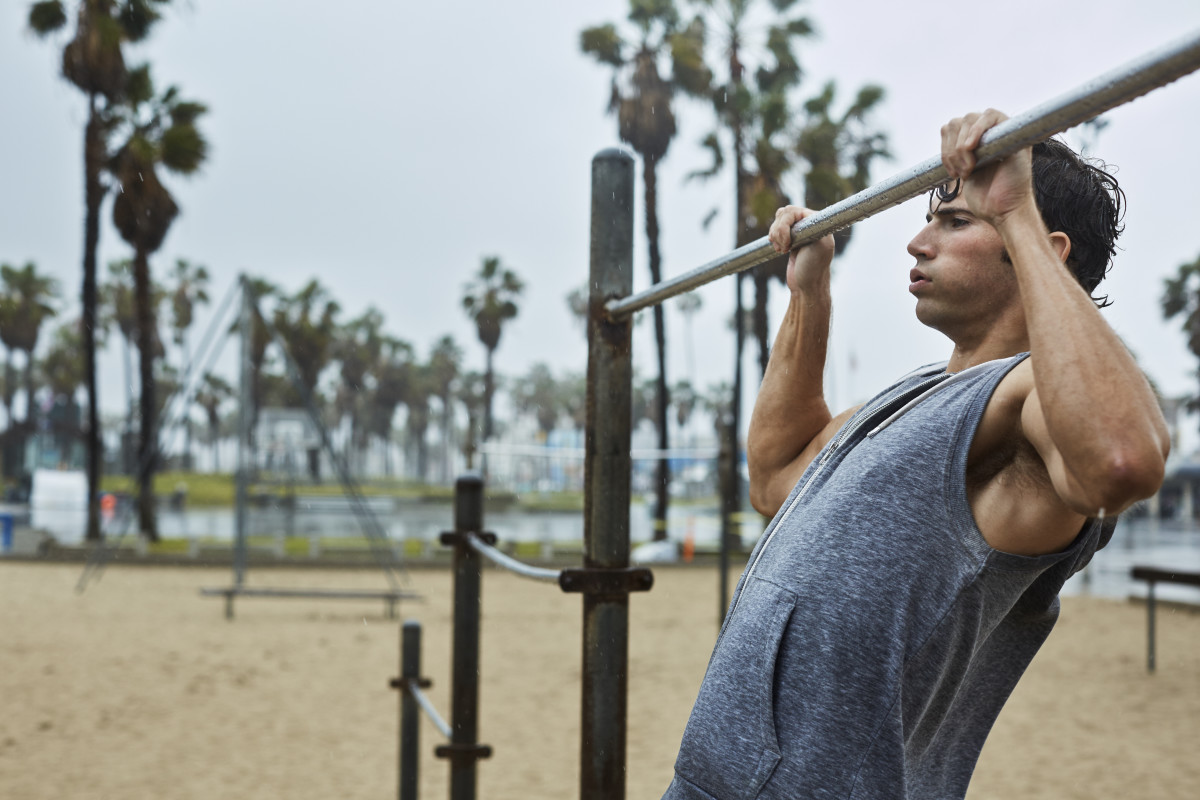
The Benefits of Pullups
The pullup is great for posture and adding size to your upper back to grow thick and wide. Additionally, strong pulling muscles are the foundation for a healthy body with little to no joint pain or chronic discomfort. Having a strong, technically sound pullup will extend itself far beyond physique benefits, and even lead to indirect performance improvements on your push exercises like the pushup, military press, bench press, and dips due to improved shoulder stability.
The Main Types of Pullups
Before you can master proper pullup form, you need to know there are two main types of pullups. “There’s the bodybuilding style, where your lower back is rounded and your knees are bent and the tactical style pullup—often used in the military and by gymnasts—where your legs are kept straight and slightly in front of your body as the pullup is completed,” says Marc Perry, C.S.C.S., C.P.T., founder of BuiltLean, who personally recommends the tactical style pullup. “It keeps your core engaged to help protect your lower back and maximizes full-body tension.”
What Muscles Are Worked by Pullups
Because this is a vertical pulling motion, you’re mostly using the same muscles for all pullup variations. The main difference you’ll find among variations is the intensity of the muscle contraction, and which of those main muscles are being targeted.
Upper Back
The lats, rhomboids, and lower traps are all key players in the back when performing pullups. These muscles are the powerhouses and bring your arms down to get your body up and over the bar. When it comes to pullup form for back gains, your grip determines what part of the back is targeted. A wide grip emphasizes the outer portion of your back, while a close grip emphasizes the middle of your back.
Arms
Muscles of the upper arm (biceps) and lower arm (forearms flexors) also get stimulated, especially if you’re doing chinups.
Core
To stabilize the body and keep the movement strict, the abs are quite active as well. Proper pullups demand involvement from the entire abdominal complex: external obliques, internal obliques, pyramidalis, rectus abdominis, transversus abdominis.
Interspersing pullup variations in your workouts will build your lats, mid-back, rear delts, biceps, forearms, and core—and by recruiting different muscles, you’ll avoid overuse injuries, too.
How to Choose the Right Grip
A pronated (overhand) grip is more difficult than a supinated (underhand) grip because your biceps are in a less-advantageous position to generate maximal force. This small difference is why underhand is generally easier than overhand (but not by much). For a neutral grip, your hands are facing each other side by side instead of forward or backward, which is in between the difficulty of a pullup and chinup, but may vary from person to person.
James Michelfelder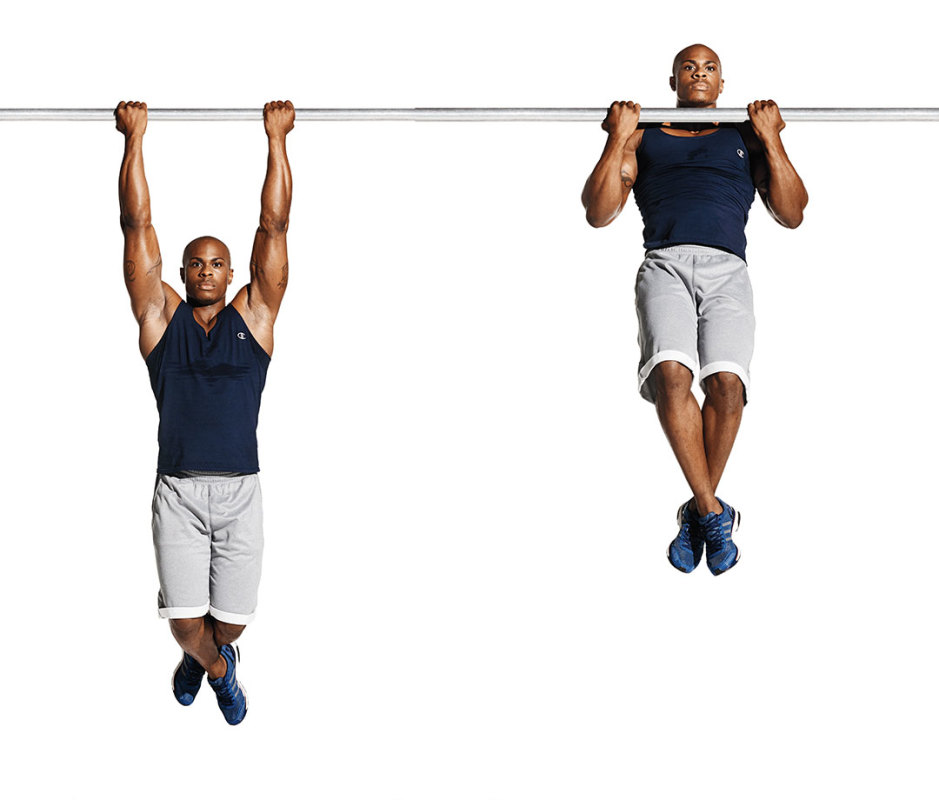
Pullups V.S. Chinups: What’s the Difference?
Both of these are terrific exercises, and the small details we’re about to get into shouldn’t encourage you to do one any more or less than the other. The key difference between a pullup and a chinup is the hand position.
- A chinup is performed with the palms facing the lifter (underhand/supinated grip), with the hands typically closer together.
- A pullup is performed with the hands facing away from the lifter (overhand/pronated grip) and typically positioned shoulder-width or wider.
Because of this, chinups tend to involve more of the biceps during the movement, whereas the pullup will involve more of the forearms. Both, however, effectively hit the lats and upper-back musculature, and regardless of starting grip position and setup, require basically the same technique cues.
The Best Pullup Technique
You may think executing proper pullup form is simple: Just hang under the bar, and haul your body up until your chin clears it, but the pullup is more complex than that.
Step 1: Set Your Shoulders
If your goal is to develop your back muscles, be aware of how to start the liftoff. Initiate the movement using the lats and lower traps by pulling your shoulders down your back from the dead hang position. This is called setting your shoulders and it pre-engages the postural muscles to do most of the work and ensures proper pullup form for back. Not doing this will make the arms and upper traps much more responsible as prime movers when, ideally, they should be assisting the back. It’s a difficult skill to master at first, but performing scapular pullups (see the video above) as an accessory drill can help.
Step 2: Pull With Your Elbows
The aim for a pullup should be to pull through the elbows, not the hands. This may sound counterintuitive, but thinking about this will place most of the emphasis on the upper and mid-back, and away from your grip strength and forearms. As you pull this way, think about tucking the elbows into your pockets, so they remain in line with the rest of the arm. This method will give you more strength than blindly pulling with little attention to detail.
Related: 15 Best Triceps Workouts and Exercises for Building Muscle
Step 3: Stay Steady
Avoid swinging, kipping, or flailing to get up to the top. The pullup is a strict movement and, for best results, involves maintaining an engaged core, squeezed glutes, and control on both halves of the rep.
Step 4: Know Your Personal End Point
Instead of using landmarks like the bar or your sternum to know how far to pull, focus more on your body type and contractions. Lifters who have more muscle mass or longer arms may not be successful in pulling all the way over the bar so your chest makes full contact. Doing this may not match the actual anatomical structure of your body. In that case, stopping a couple inches shy of the bar might be the smartest bet.
Step 5: Slowly Lower to Full Hang
One of the most common cheats in proper pullup form is stopping shy of full extension on each lowering phase. That means you’re missing out on major benefits by avoiding full range of motion, and you’re more concerned with looking good than you are with properly breaking muscles down. Time for an ego check, followed by a reality check. Control your descent, and start your next rep only when the previous rep is truly complete.
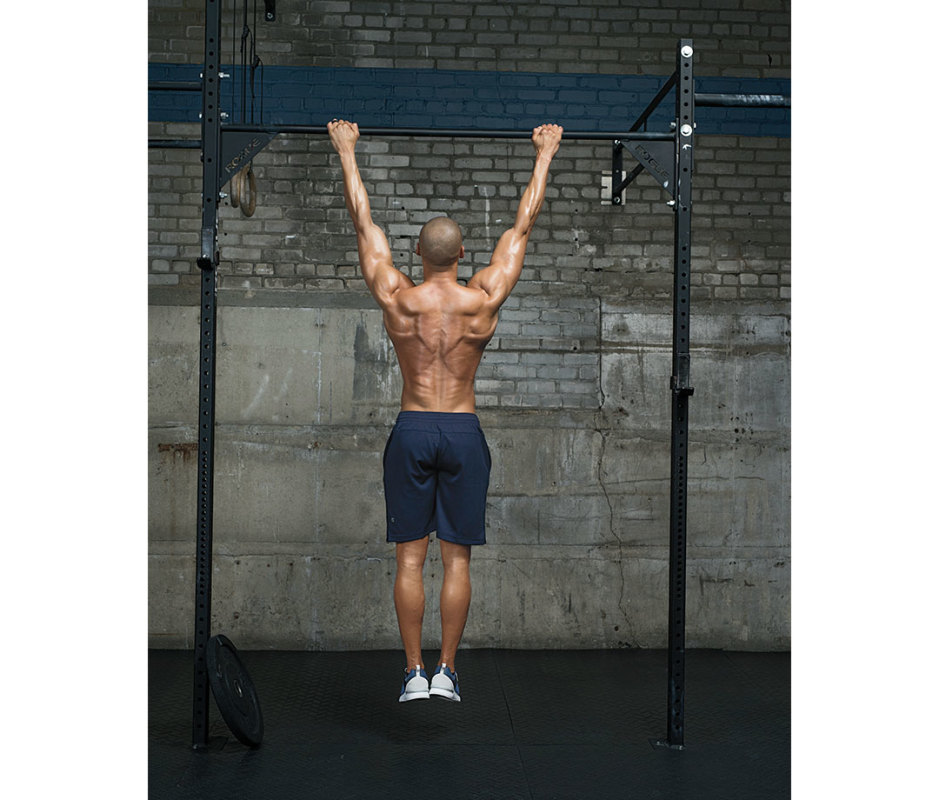
Dylan Coulter
Pullup Tips: What Exercises Work Up to Pullups
There are ways you can achieve higher-quality pullups. Since not everyone is a master at proper pullup form right off the bat, here are strength-building tactics to add to your gym sessions.
1. Eccentric-Only Pullups
Everyone has more strength lowering something than they do lifting something. So exploiting the negative or eccentric strength of a pullup is the number-one way to make the full movement stronger.
How to Do It
- Using assistance like a box or step, hop up to the top position of the pullup, to start.
- Lower yourself slowly by resisting the descent. Allow 5 to 10 seconds before you reach a dead hang, and aim to keep good form and upper-back tension throughout.
- That’s 1 rep. Focus on sets of 3 to 6 eccentric reps.
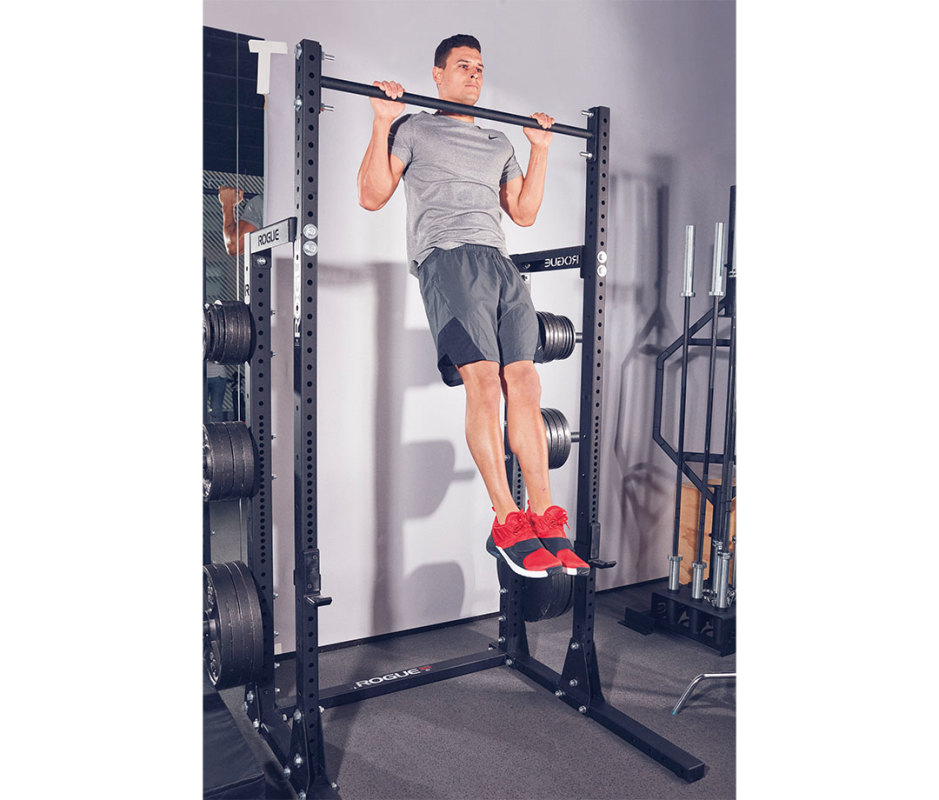
Anthony Cunanan
2. Flexed Arm Hangs
This drill comes straight from the military and high school gym class, and the instructions are simple. Of course, this depends on your weight as much as your strength, but if you can pull off a 30-second flexed arm hang, you’re in a great place to do pullups.
How to Do It
- Assist yourself up to the top of a pullup position using a step or box, to start.
- Without said assistance, hold the top position for as long as possible.
- Keep your face over the bar and squeeze the back and core muscles hard.
- Hold for desired time.
Related: The Best 20-Minute Bodyweight Chest Workout
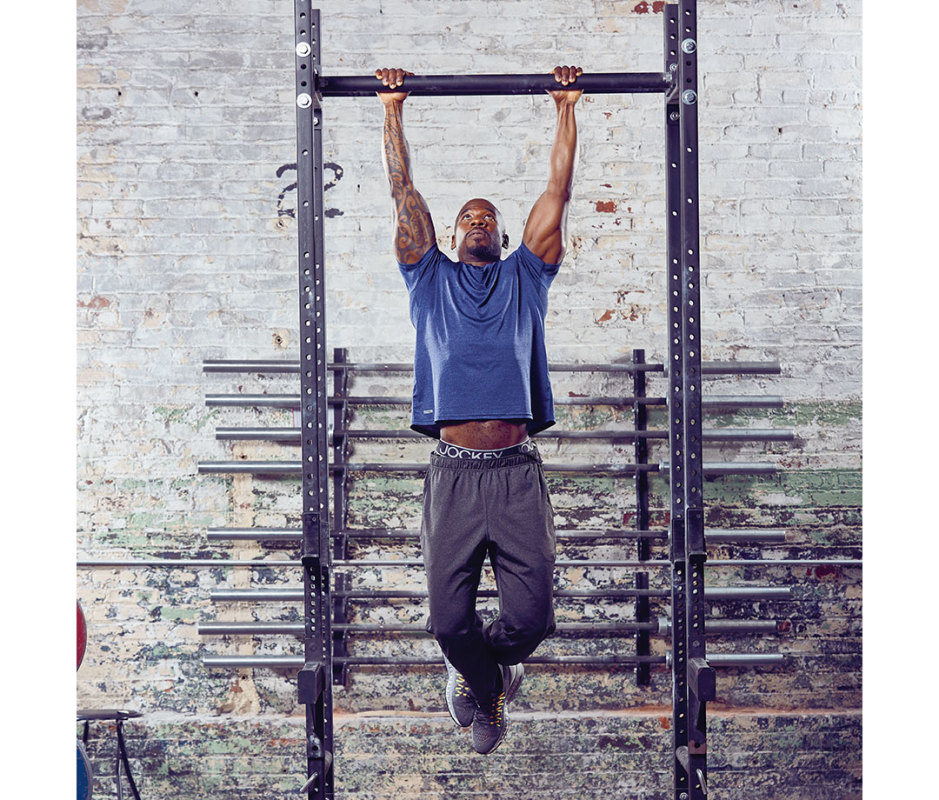
Jay Sullivan
3. Paused Reps
Killing transfer of energy and the use of the stretch reflex make any lift harder to complete. If you want to get better at pullups, strategically adding a dead hang pause at the bottom of your rep, or a one-second freeze up at the top when you’ve cleared the bar, are excellent options. In both cases, it’ll mean the total amount of reps you can perform are reduced, since you’re not relying on any rebound effect or elastic forces. But this will serve the greater good of making your pullup game invincible.
The Most Common Pullup Mistakes
1. You’re Letting Your Elbows Flare
Elbows should be tucked for pullups. If you want your lats to become stronger and more developed, keeping your elbows under the bar matters. It’ll also make it much easier to get your chest up when the elbows aren’t too wide. All of this means more back stimulation and a quality pull.
2. Your Back Is Straight as an Arrow
Many cues for proper pullup form claim the body should be held completely straight from head to toe. This sets an honest-minded trainee on the wrong path. We know pullups are intended to be a back developer, and we’ve learned that hitting the back requires the shoulders to be retracted and set to engage the posterior muscles. Try pulling your shoulders back without mildly arching your back. It’s not possible. To hit your back properly during pullups, think of raising the rib cage toward the bar. Arch the back, and set the shoulders. You’ll feel the difference.
In addition to these two mistakes, avoiding full range of motion and neglecting to set the shoulders, as mentioned earlier, are frequent errors that can hinder your progress and the ultimate goal of proper pullup form for your back.
The Best Number of Reps and Sets to Maximize Goals
If your goal is to maximize strength, complete several sets without going to failure. This will help condition your nervous system to get stronger faster than it could by constantly going to failure. If you can max out at 10 reps, doing 5 sets of 7 reps (35 reps total) is better than 3 sets of 9 (27 reps total). If you’re shooting for maximum muscle growth, training several sets (5 to 10) to technical failure will stimulate your muscle fibers the most.
In general, a few sets of pullups is a good place to start. You want to give yourself enough rest between sets so you can complete a quality set with good form. “More rest is better for strength building; less rest is better for muscle building,” Perry says. Start off at 30-60 seconds rest between sets for muscle building, and 2-3 minutes for strength building. Once you master the move in its most basic form, start to incorporate these pullup variations.
15 Best Pullup Variations
SrdjanPav/Getty Images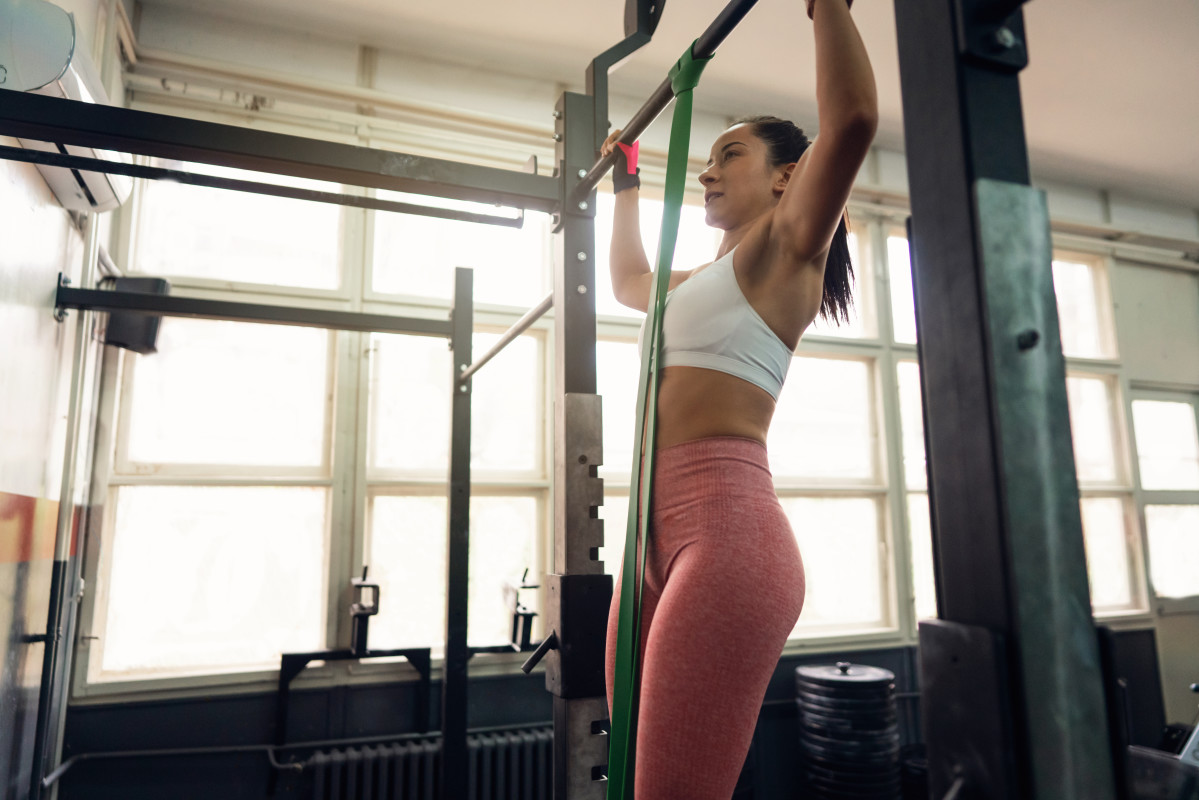
1. Band-Assisted Pullup
Why It Works
For lifters who want to get more out of the pullup but are still progressing toward doing their own bodyweight reps, it’s beneficial to use a band-assisted pullup. This is a terrific training tool for lifters newer to pullups, heavier lifters, or even advanced lifters who want to place an even greater focus on strictly isolating the back muscles. Assisted pullup form is exactly the same as unassisted.
How to Do It
- Strap a resistance band around the bar (the thicker it is, the greater it’ll assist you). Place your hands shoulder-width or wider on either side of the band on the bar using an overhand grip, to start.
- Step one or both feet onto the bottom of the loop and extend legs.
- From a hanging position, engage your lats and pull your shoulder blades down your back, then pull up, allowing the band to “assist” you to the top. (Most of the help from assisted pullup form comes from the bottom half of the lift.)
- Slowly lower down to a dead hang.
- That’s 1 rep.
Getty Images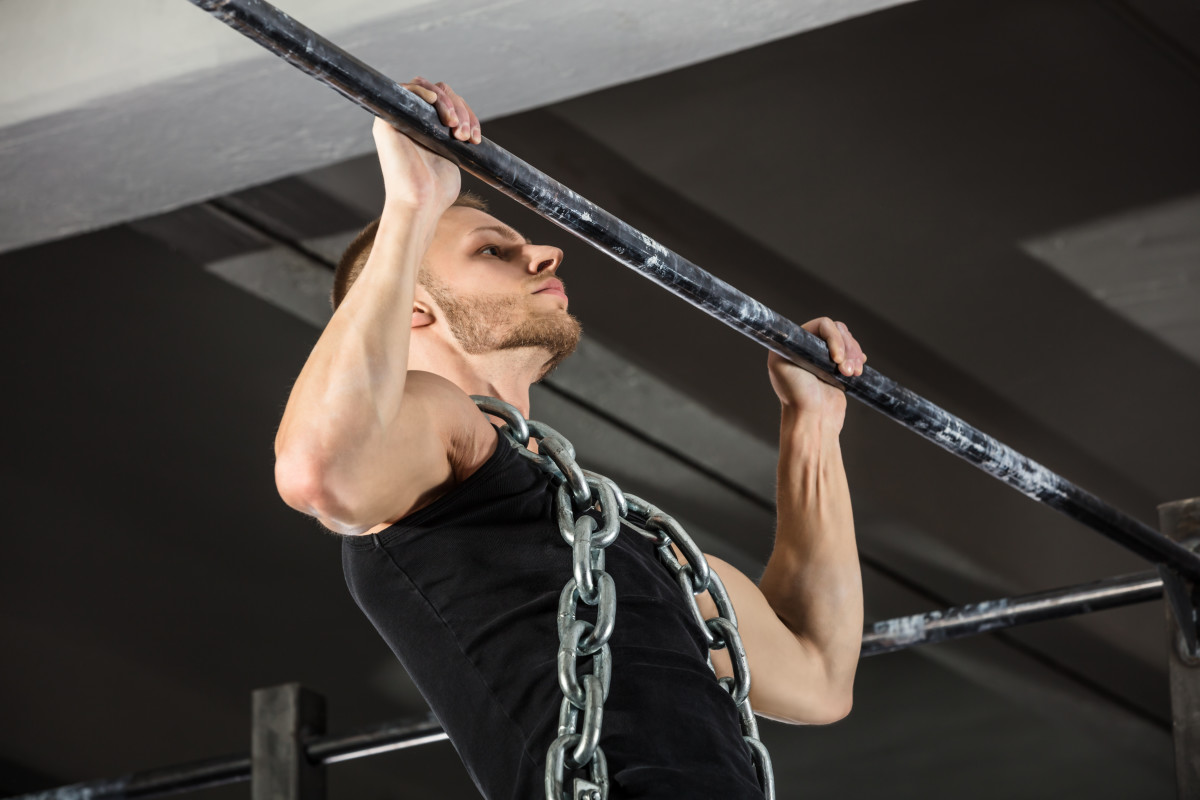
2. Weighted Pullup
Why It Works
For more advanced lifters, weighted pullups can be a useful modification to increase the challenge. But a disclaimer: This is best-suited for people with a good strength-to-weight ratio. In other words, a 155-pound lifter will generally get more out of this method than a 240-pound lifter will. For heavier lifters, bodyweight repetitions should serve as enough of a challenge, especially when factoring in the use of good, proper technique. There are a number of ways to create progressive overload that makes the back and arms work harder.
How to Do It
- Variation 1: Wear a weight belt and attach external load to it with plates.
- Variation 2: Hold a dumbbell between your feet or criss-crossed legs.
- Variation 3: Place a heavy chain around your shoulders.
- Variation 4: Wear a weight vest.
James Michelfelder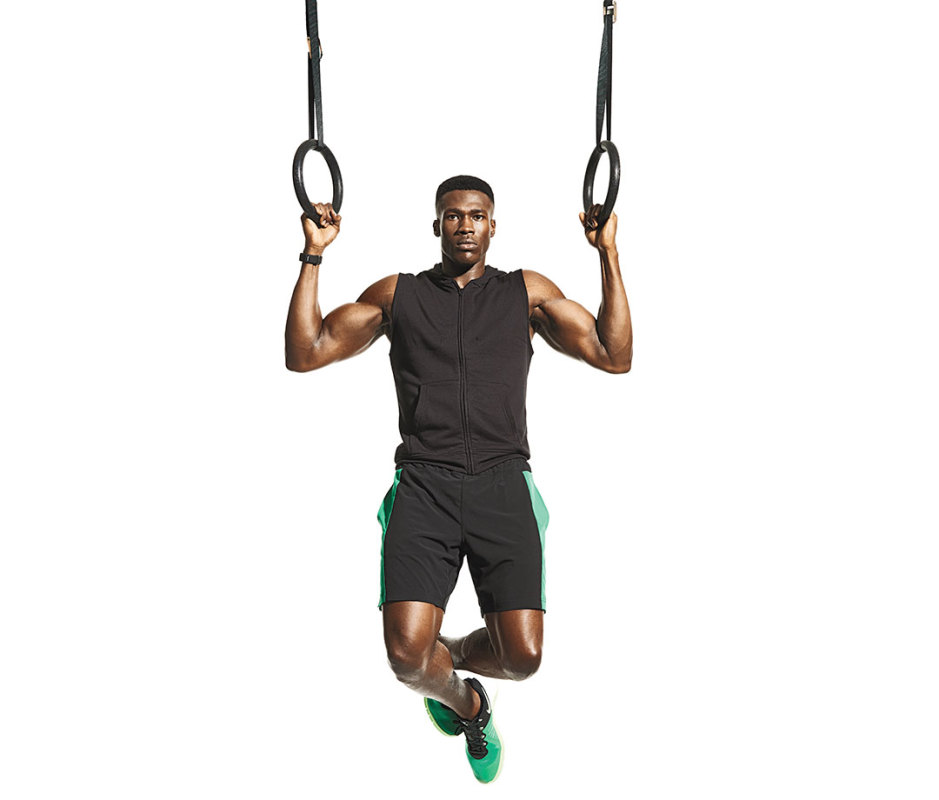
3. Gymnastic Ring Pullup
Why It Works
Pullups on a fixed bar can demand a lot of your wrists, and some lifters may develop chronic pain from overuse. Using gymnastic rings lets you to customize the rotation of your hands as each rep happens, making the movement much friendlier to the joints. This works not only as a remedy for wrist and elbow discomfort, but also as a tool to make basic pullups harder due to a variable grip with less lateral stability.
If you don’t have gymnastic rings readily accessible at your gym, there are plenty of companies that create alternatives like attachable grips that fit on any fixed bar (shown in the video above). They’re a cheap investment that can be a game changer for your pullup strength and joint health—just what your pullup may be missing.
How to Do It
- Hang from gymnastics rings or attachable grips so your palms can face each other and your wrists can move independently, to start.
- Pull your body up until your chin is above your hands.
- Slowly lower down to a full dead hang.
- That’s 1 rep.
Therese Sommerseth and James Michelfelder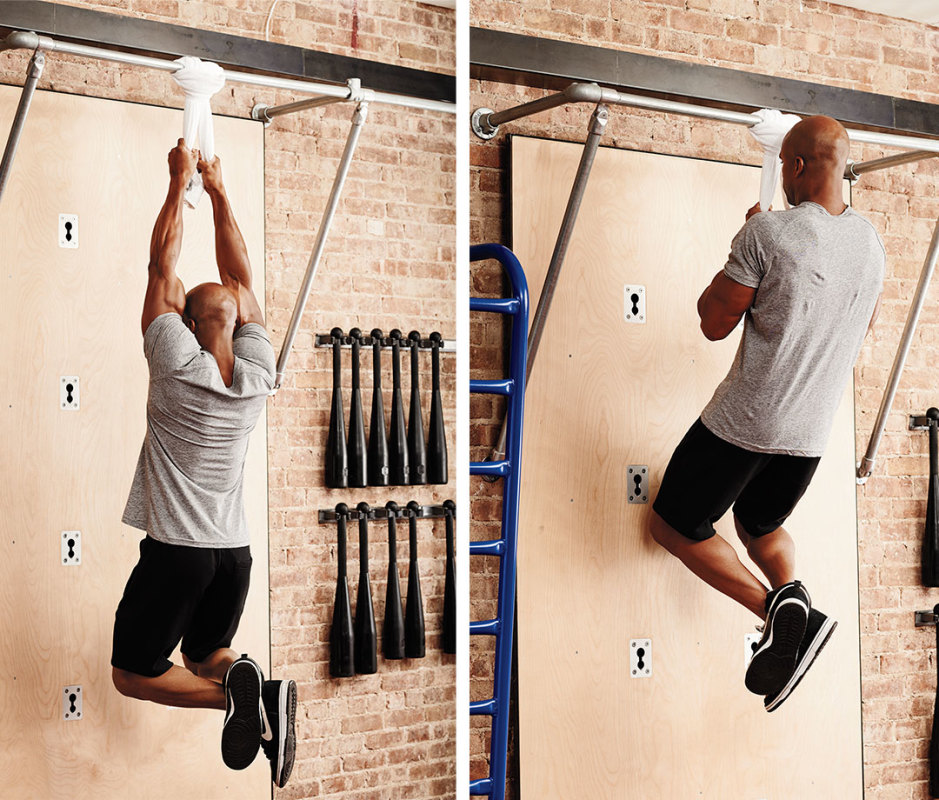
4. Towel Pullup
Why It Works
Aside from building the muscles in your arms, back, and core, towel grip pullups are one of the most effective exercises for developing grip strength. The reason: You really have to work to keep your hands from slipping off the towel as you complete each rep. “Use a towel that’s thick enough so it won’t rip apart,” Perry suggests. You can imagine the consequences of not following this tip. “Most small gym towels will rip, so consider using a couple of them at the same time,” he adds.
How to Do It
- Place a towel over a pullup bar and grab an end in each hand, to start.
- Hang from the towel until arms are extended.
- Pull yourself up until your chin is higher than your hands.
- Slowly lower down to a dead hang. That’s 1 rep.
- If that’s too hard, start by hanging from the towel for 30 seconds or as long as you can, then progress up.
Getty Images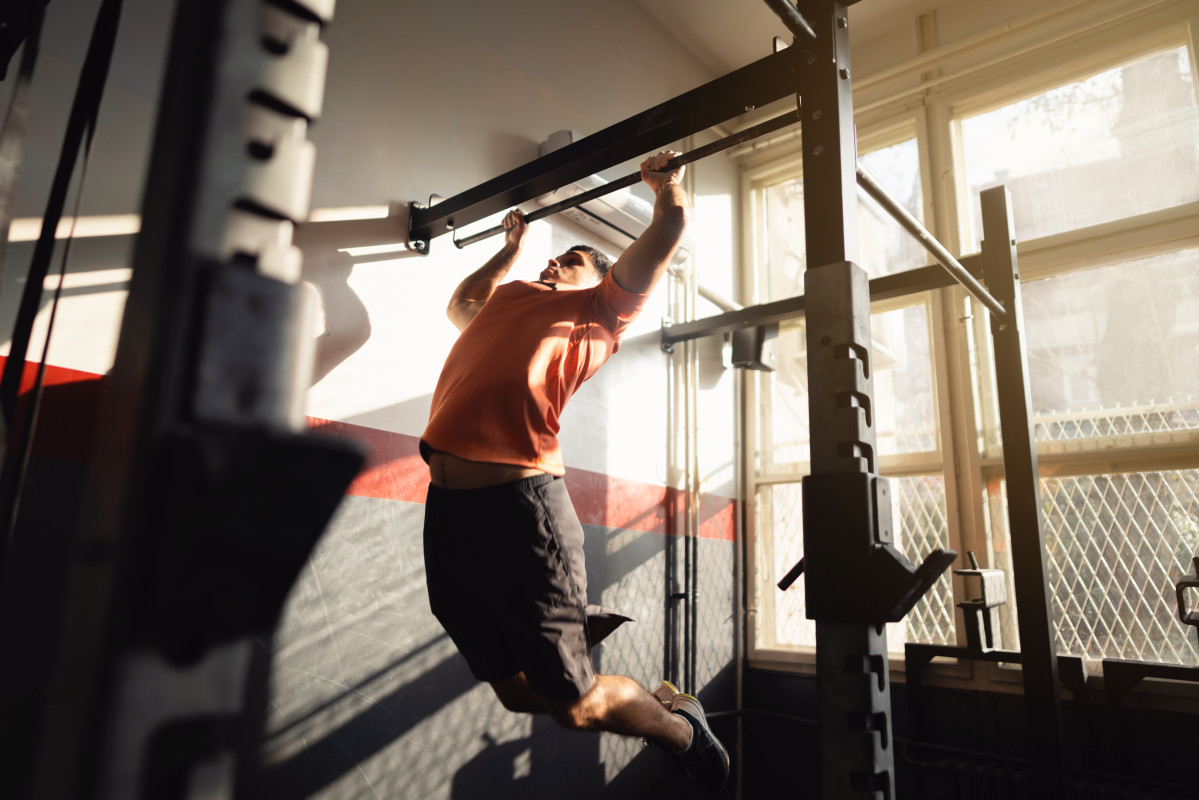
5. Kipping Pullup
Why It Works
“Traditional pullups are ‘strict,’ meaning no momentum is used to help pull your body up to the bar,” Perry says. But the kipping pullup—made popular by CrossFit—does, in fact, use momentum to help propel your body. Nailing down the technique is a bit tricky because it’s such a highly technical movement, but this is an excellent anaerobic exercise for your upper body. Once perfected, kipping pullups are a great way to build strong lats, wide shoulders, and a powerful grip. You’ll be able to do more reps than you’d ever dream of hitting with traditional pullups.
How to Do It
- Hang from a pullup bar using an overhand grip with hands outside shoulder width, to start.
- Retract your shoulder blades and swing your legs back so your torso moves forward. Your body should create a backwards arc.
- Then, contract your chest and swing your legs forward and use the momentum to help you pull your chin up over the bar.
- That’s 1 rep.
eclipse_images/Getty Images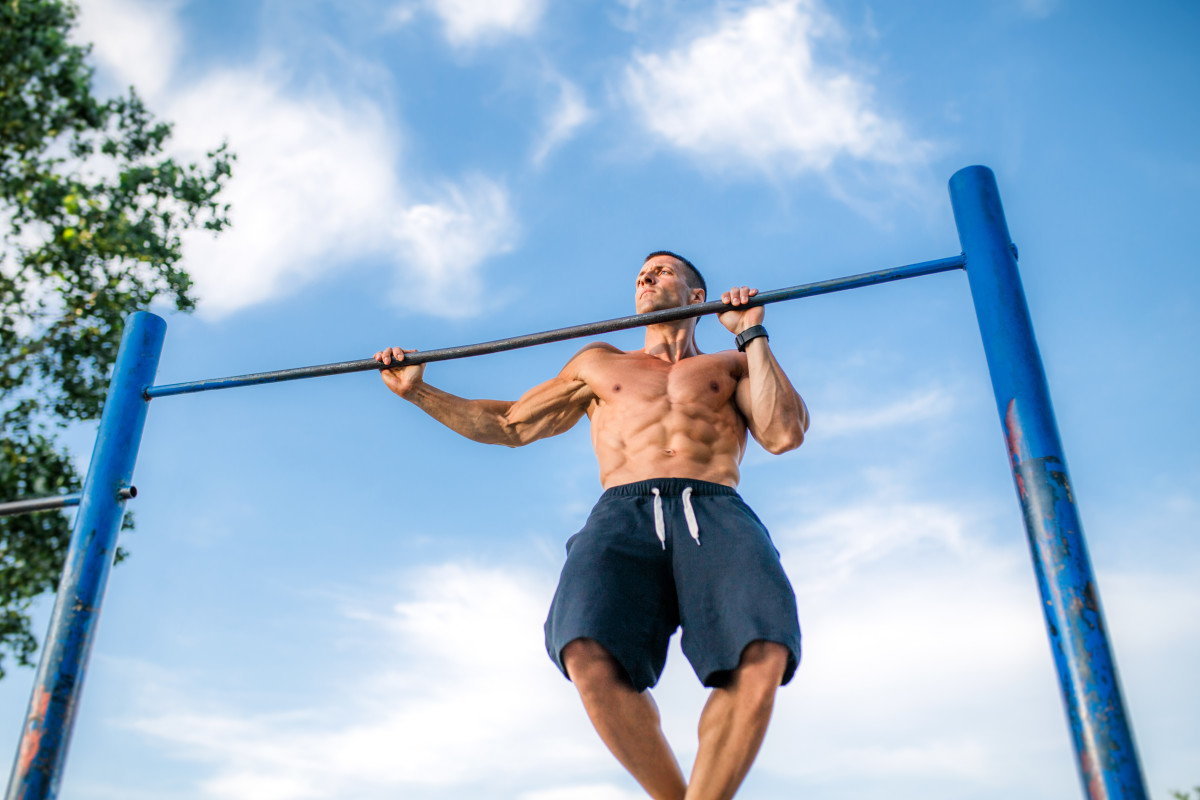
6. Around-the-World Pullup
Why It Works
Because you’re pulling your body up and over toward one hand, then across the bar to your other before coming back down to the starting position, you’re loading only one side of your body with weight. This puts more load on your muscles than a traditional pullup, which distributes your weight evenly. “Around-the-world pullups are a worthy segue to a one-arm pullup, because they emphasize one arm over the other in the initial phase of the pull,” Perry says.
How to Do It
- Start with an overhand grip with your hands about 6 to 12 inches wider than shoulder-width apart, to start.
- Pull your body up toward your right hand, then pull your body across the bar laterally to your left hand.
- Slowly drop down to the starting position.
- That’s 1 rep. You can either repeat to the right hand, or pull up toward your left to change direction for the desired number of reps.
Getty Images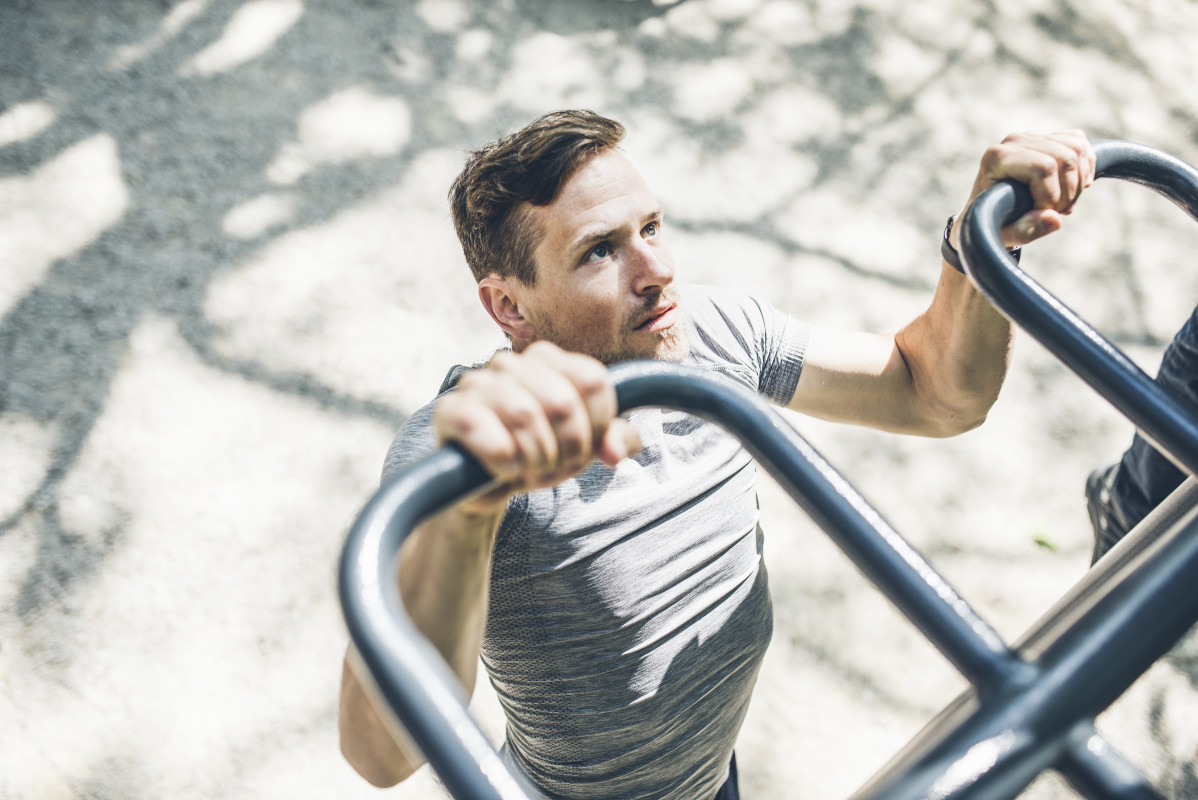
7. Close-Grip Pullup
Why It Works
A close-grip pullup better emphasizes the muscles in your arms. “That’s because they have to work overtime to pull your body farther, vertically,” Perry says. And don’t worry, you’ll still hit the major muscles in your back. Even though they’re not emphasized as much as your arms, you’re still activating your rhomboids, lower and middle traps, and serratus posterior superior to a great degree, Perry adds.
How to Do It
- Grab the bar with an overhand grip slightly narrower than shoulder-width apart, to start.
- Pull up to the bar in a smooth motion so the bar touches the bottom of your neck at the top of the pullup.
- Lower down—keeping the movement controlled—until your arms are locked.
- That’s 1 rep.
Drazen_/Getty Images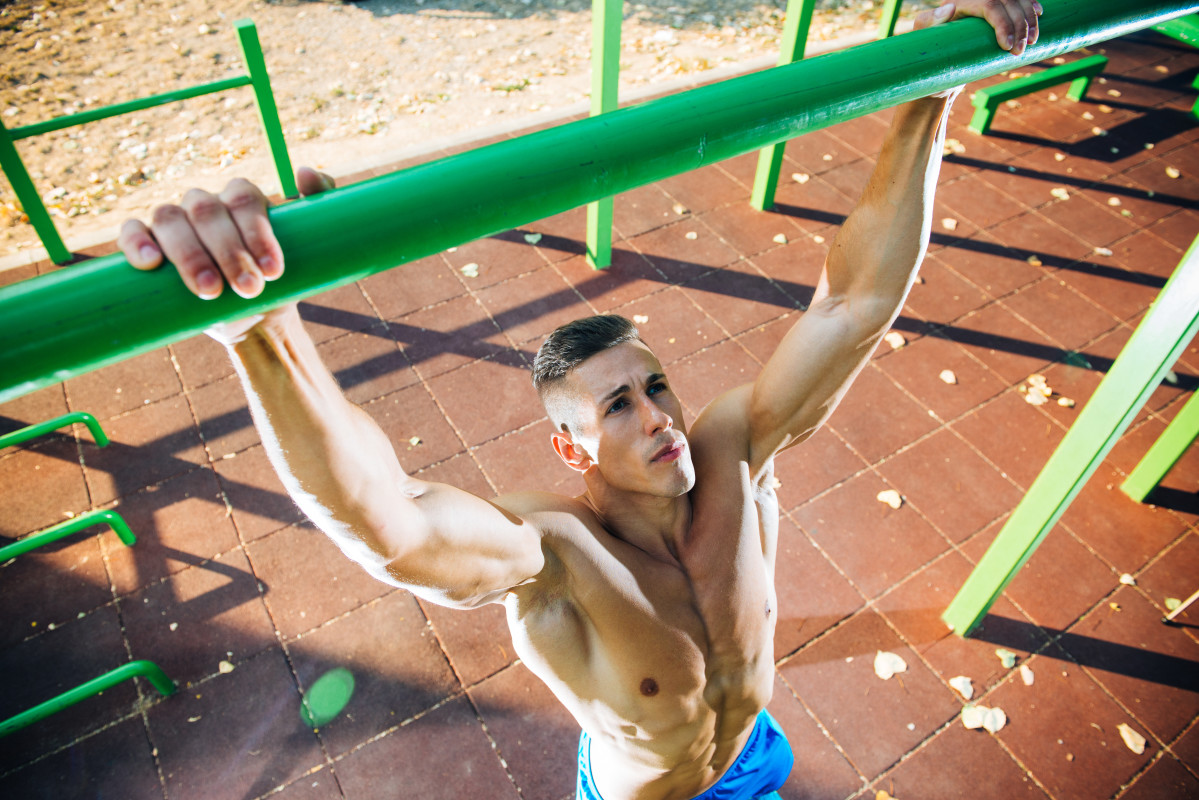
8. Wide-Grip Pullup
Why It Works
A wide-grip pullup emphasizes your back muscles to a greater degree than close-grip pullups. “This is because the distance your body needs to be pulled up to the bar is shorter,” Perry explains. This is a killer workout for the outer portion of your back; those muscles are triggered and firing to help pull your body up.
How to Do It
- Grab the bar with an overhand grip wider than shoulder-width apart, to start.
- Pull up to the bar in a smooth motion so the bar grazes the bottom of your neck at the top of the pullup.
- Lower down—keeping the movement controlled—until your arms are locked.
- That’s 1 rep.
choice76/Getty Images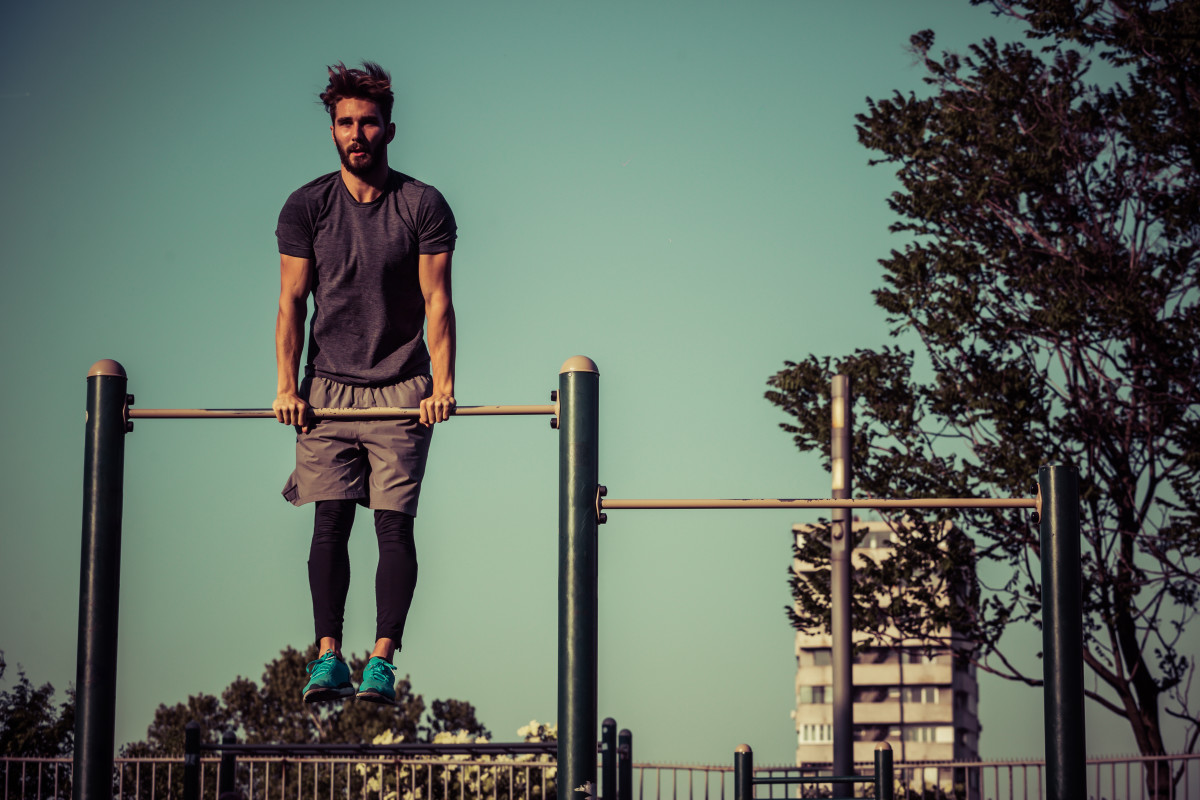
9. Muscle-Up
Why It Works
“A muscle-up is similar to a kipping pullup in that some momentum is used to help propel your body up,” Perry says. “You need to pull hard enough so your chest clears the bar, allowing you to push your body up and over so your arms are completely straight,” he adds. People who can do 10 pullups may not be able to do one muscle-up, because it requires such a substantial amount of pulling strength. The technique is difficult to master, but you’ll learn how to effectively move your hips, core, shoulders, chest, and triceps once you do.
How to Do It
- Start with your hands in an overhand grip slightly wider than shoulder-width apart, to start.
- Pull your legs back slightly, then forcefully pull your chest over the bar.
- As your chest is above the bar, extend your arms straight so your waist is roughly in line with the bar and your body is still above it.
- Drop back down using momentum.
- That’s 1 rep.
MichaelSvoboda/Getty Images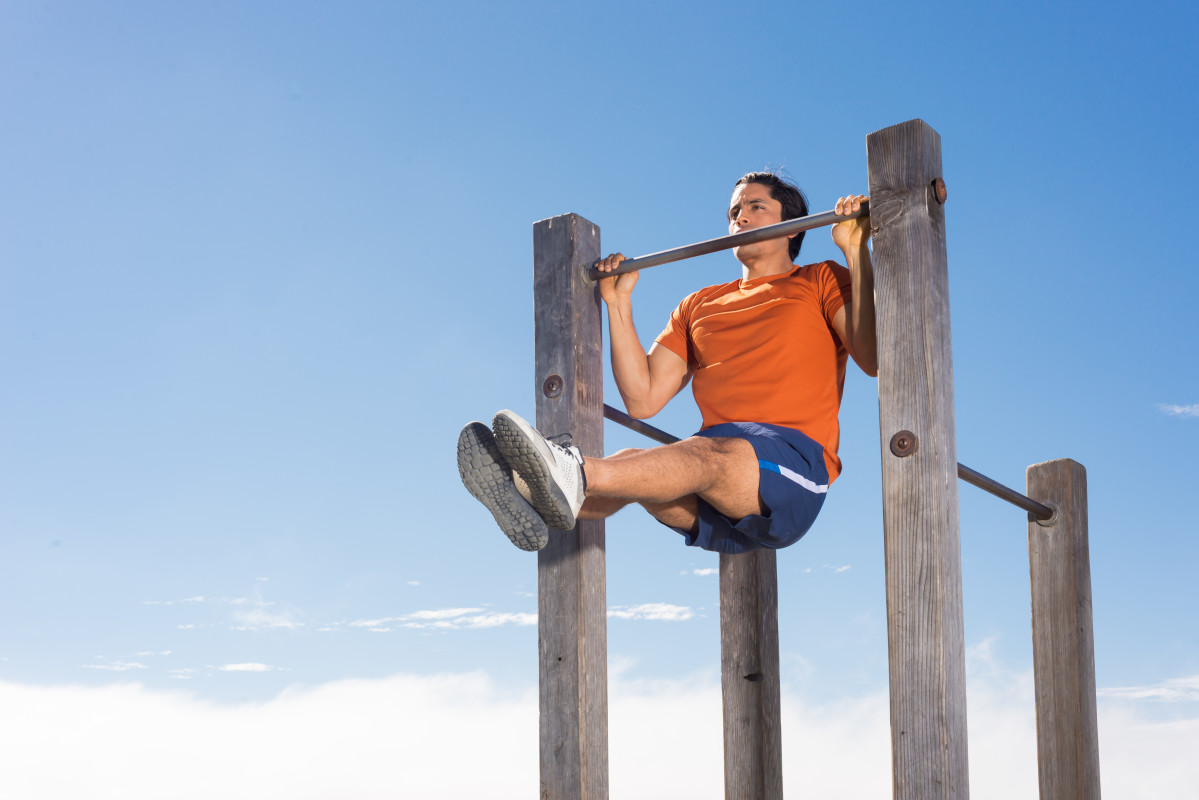
10. L-Sit Pullup
Why It Works
“The L-sit requires excellent core strength, as well as hamstring and hip flexibility to keep your legs parallel to the ground as you pull up to the bar and resist on the way down for the duration of the set,” Perry says. This pullup is used by gymnasts and is an advanced pullup variation that will destroy your abs.
How to Do It
- Hang from a bar with an overhand grip and your hands shoulder-width apart, to start.
- Lift your legs so they’re parallel to the ground and perpendicular to your torso.
- While keeping your legs straight, pull up to the bar—high enough so the bar grazes the bottom of your neck—then drop back down.
- That’s 1 rep.
milan2099/Getty Images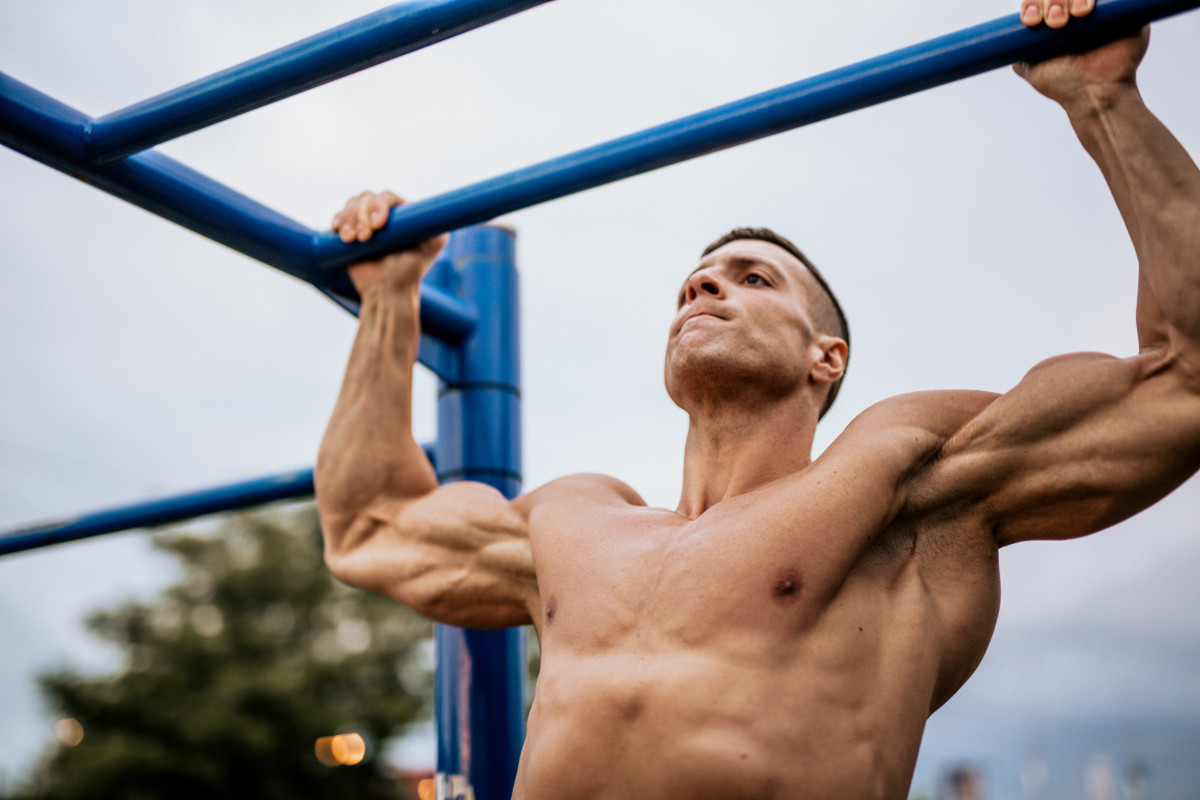
11. Plyo Pullup
Why It Works
“Plyo pullups—including hand release, clapping, and even spinning—require a substantial amount of pulling strength to get your body up to the bar with enough force so you can release your hands at the top of the movement, then catch the bar on your way down,” Perry says. This is a great test of explosive strength—especially once you’ve gotten confident with controlled varieties.
How to Do It
- Assume a grip that’s slightly wider than shoulder-width apart, and forcefully pull your body up to the bar as fast as you can, to start.
- Momentarily take your hands off the bar, then catch the bar on your way down. As you advance, you can consider claps or even spins.
- That’s 1 rep.
12. Mixed Grip Pullup
Why It Works
For this variation, one of your hands is underhand and the other is overhand on the bar. “Know that the arm with the overhand grip typically works harder than the underhand arm to pull your body up,” Perry says. This is a two-in-one move that adds serious mass to your biceps and back; plus your core is forced to stabilize your torso and keep it straight, so you’ll get some ab work in, too.
How to Do It
- Start with your left hand in an overhand grip and your right hand in an underhand grip with your hands shoulder-width apart, to start.
- Pull up toward the bar so it grazes the bottom of your neck.
- Lower down until your arms are straight.
- That’s 1 rep. Alternate sets by varying which hand is underhand and overhand.
Sestovic/Getty Images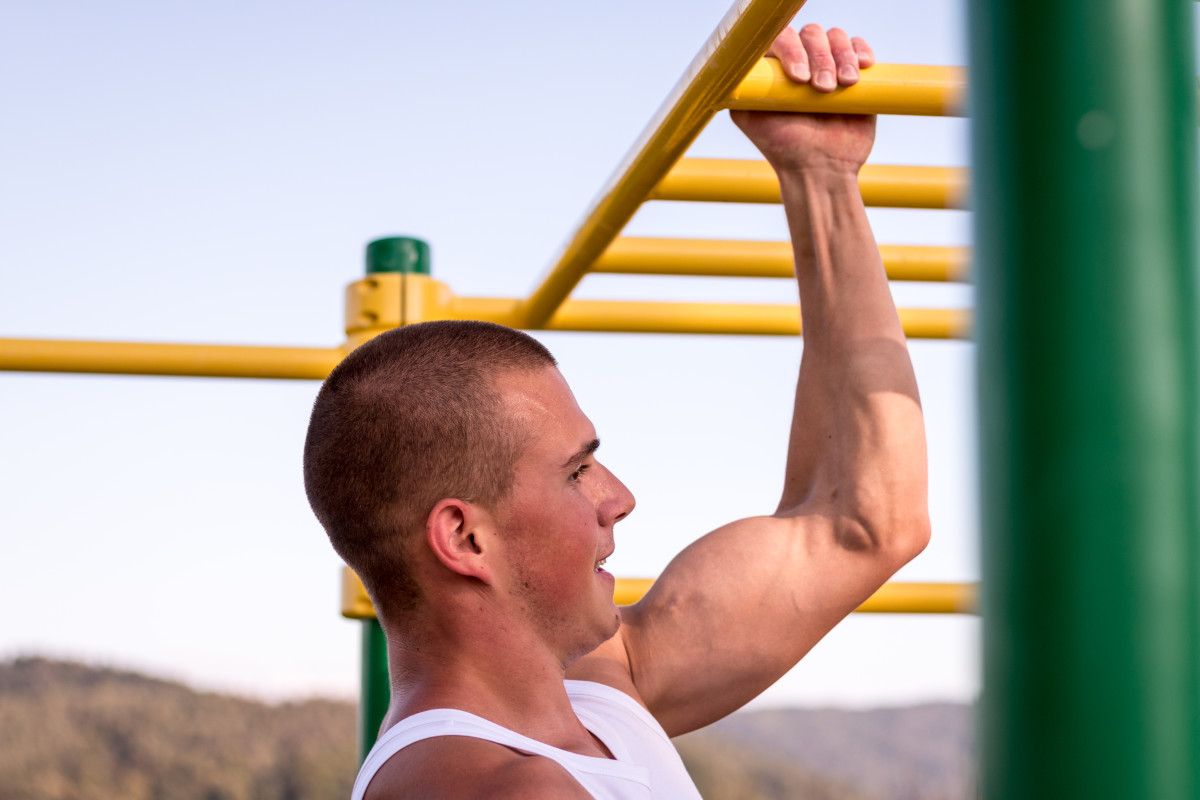
13. One-Arm Pullup
Why It Works
The single-arm pullup is the hardest of all variations, because—obviously—just one arm pulls your entire body’s weight up to the bar. You can do this one of two ways, Perry says: Hold the wrist of the arm that’s gripping the bar, then use both to pull yourself up, or use just one arm without any assistance. Just know the latter is much more difficult.
How to Do It
- Grasp the bar with your right hand using a neutral grip, to start.
- While hanging with just your right arm, pull your right hip up so it shortens the distance between your right shoulder and right hip. (This helps connect your core to your lats and shoulders.)
- Now, forcefully pull your body up to the bar using your lats and core muscles, not your arm.
- Lower down and repeat with the left arm.
- That’s 1 rep.
Ziga Plahutar/Getty Images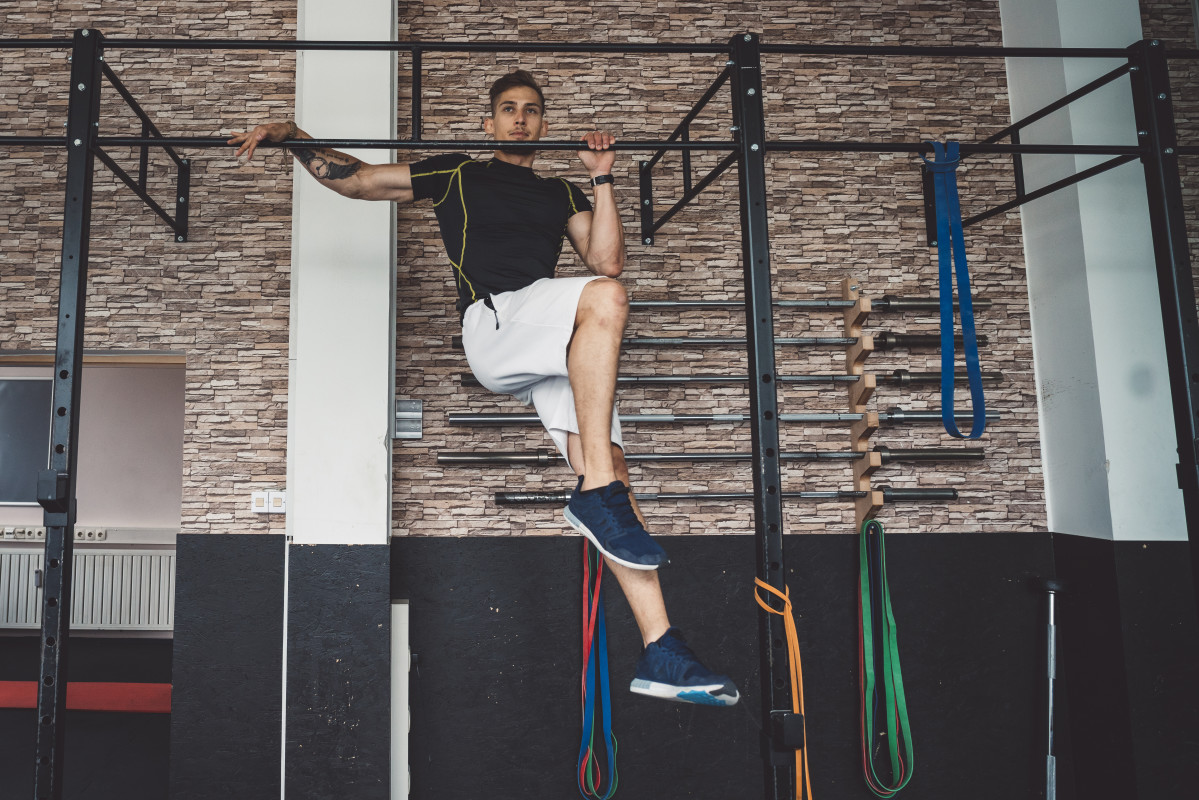
14. Archer Pullup
Why It Works
What’s great about this variation is you’re adding a significant amount of resistance with just your bodyweight.
How to Do It
- Grab the bar with a wide, overhand grip, to start.
- Pull your body up high enough so your upper chest is in line with the bar.
- Shift your body to your left hand as you extend your right arm straight out to the side.
- Repeat this to your right side, extending your left arm straight out to the side, then drop back down.
- That’s 1 rep.
PeopleImages/Getty Images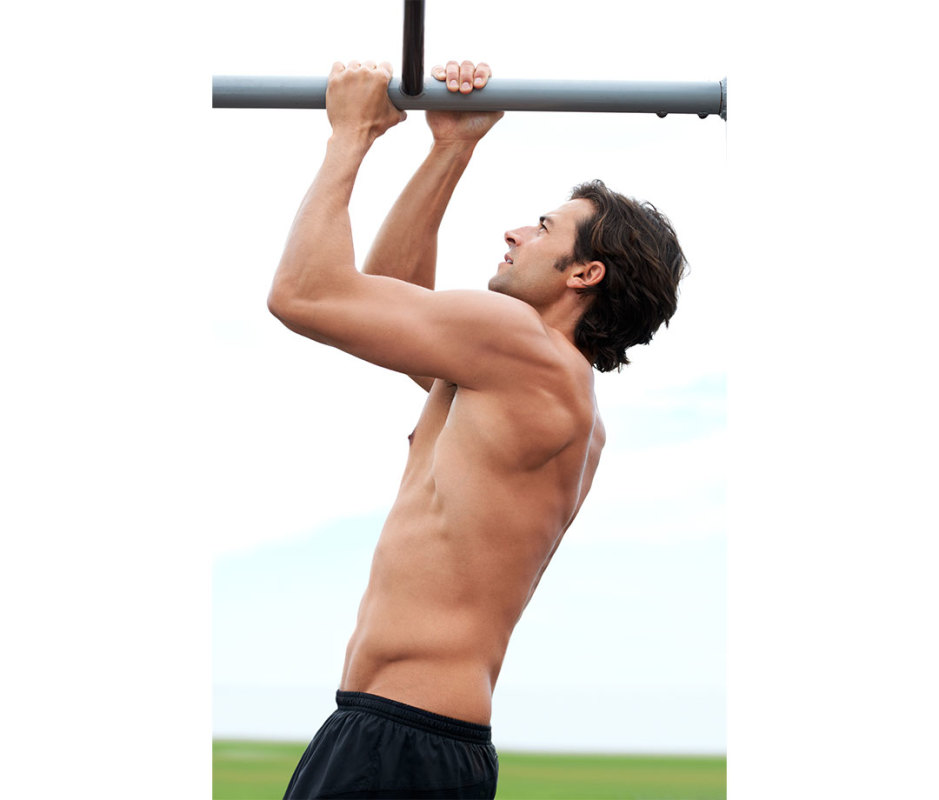
15. Commando Pullups (aka Cliffhanger)
Why It Works
Sometimes referred to as the “cliffhanger,” the tandem grip of this variation requires both your hands to assume a neutral grip on the bar. If you have a bar that’s open on both ends, the pullup can be done on both sides. If it’s not, place both hands on one bar. Consider putting the hand of the side you want to pull up to first closest to you, then place your other hand behind it.
How to Do It
- Start with your right hand closest to you holding the bar in a neutral grip, with your left hand behind it, to start.
- Pull your head up to the right of the bar so the bar grazes your upper left shoulder.
- Lower down.
- That’s 1 rep. Perform all reps on one side, then switch the position of your hands and do the left side.
How to Do Pullups Without Hurting Elbows?
Elbow pain is one of the most common complaints from athletes struggling to perform pullups without discomfort. Often, this is a mobility problem and the elbows aren’t even to blame. Elbows are a hinge joint, which rely heavily on the health and mobility of the ball-and-socket joint located above. Similar to the knee depending on the hip, the elbow is dependent on the shoulder. Doing pullups and chinups with poor shoulder mobility can create unwanted strain on the shoulder joint, which will translate itself down the chain to torquing on the elbow.
Try these exercises before you do pullups or any upper-body workout to boost shoulder mobility:
1. T-Spine Rotation
Justin Steele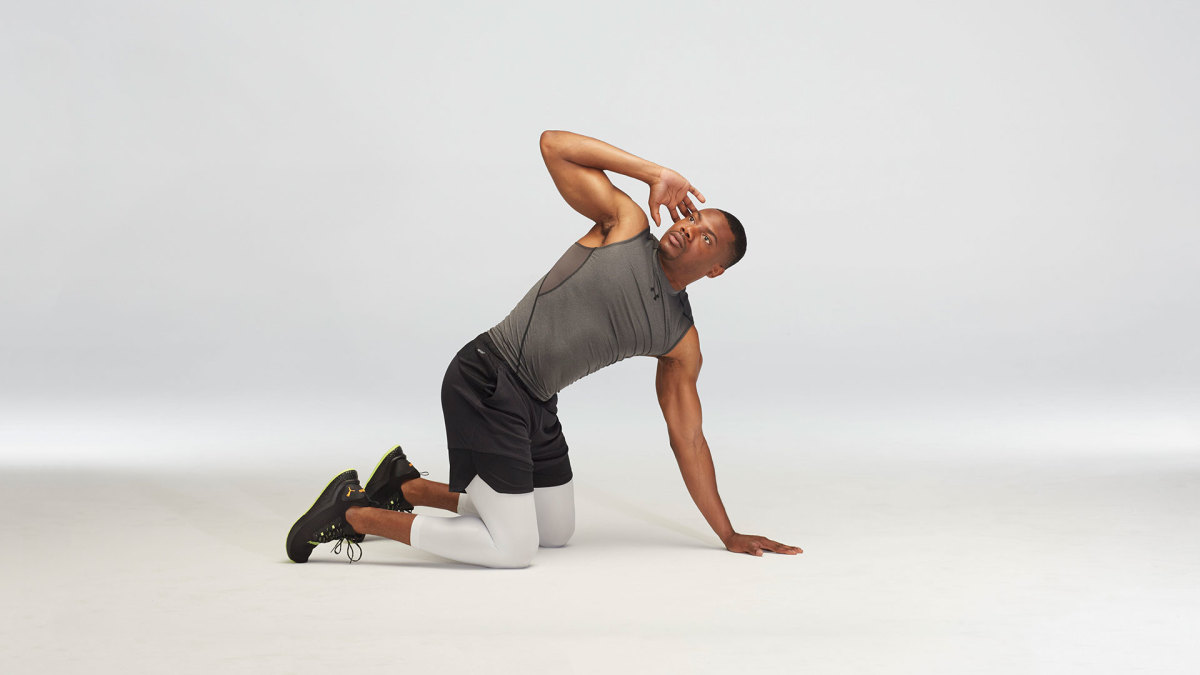
How to Do It
- Start on hands and knees, right hand cupping right ear, to start.
- Rotate torso so right elbow reaches toward left hand, then reverse until elbow points toward ceiling.
- That’s 1 rep. Do this for 2 minutes, switching sides halfway through.
2. Y-W-T Holds
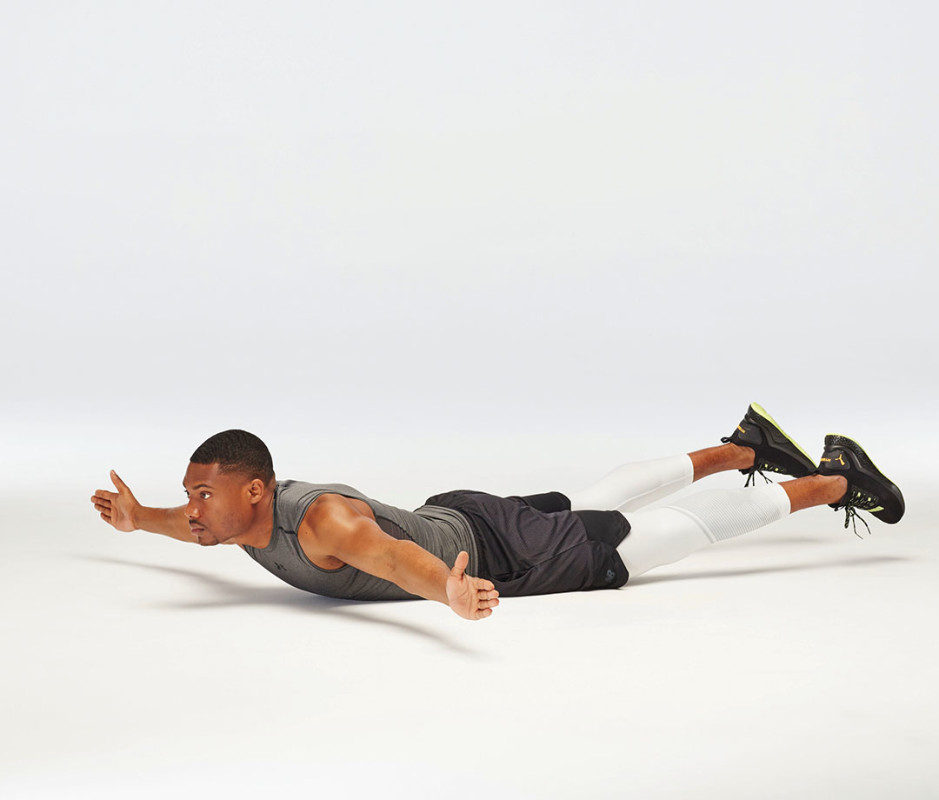
How to Do It
- Lie on stomach, limbs outstretched, to start.
- Engage core, glutes, and back to lift torso off floor.
- Press arms up into a Y shape and hold for 20 seconds.
- Bend elbows and bring toward rib cage to make a W and hold for 20 seconds.
- Reach arms out to sides to form a T and hold for 20 seconds.
- That’s 1 set.
3. Banded Stretch and Smash
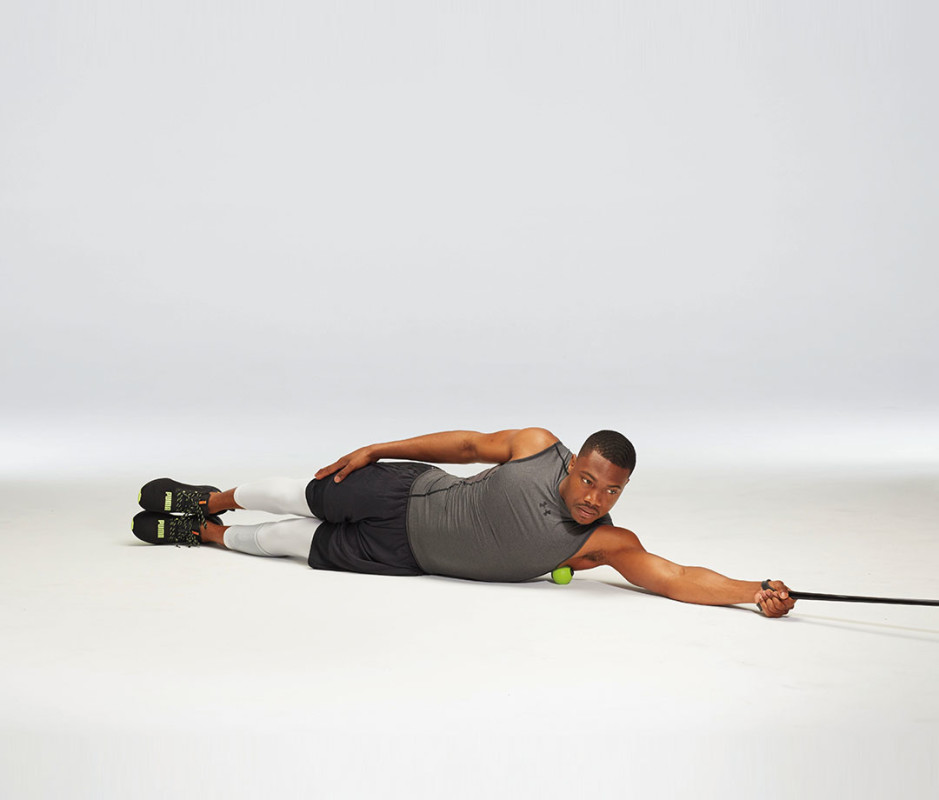
How to Do It
- Attach a resistance band near the bottom of a rig. Lie on right side, right arm extended, band taut, holding free end of band, a lacrosse ball wedged between ground and body just outside of armpit, to start.
- Shift weight into ball.
- Hold position for 1 minute on each side.
- That’s 1 set.
5. Banded Pullaparts
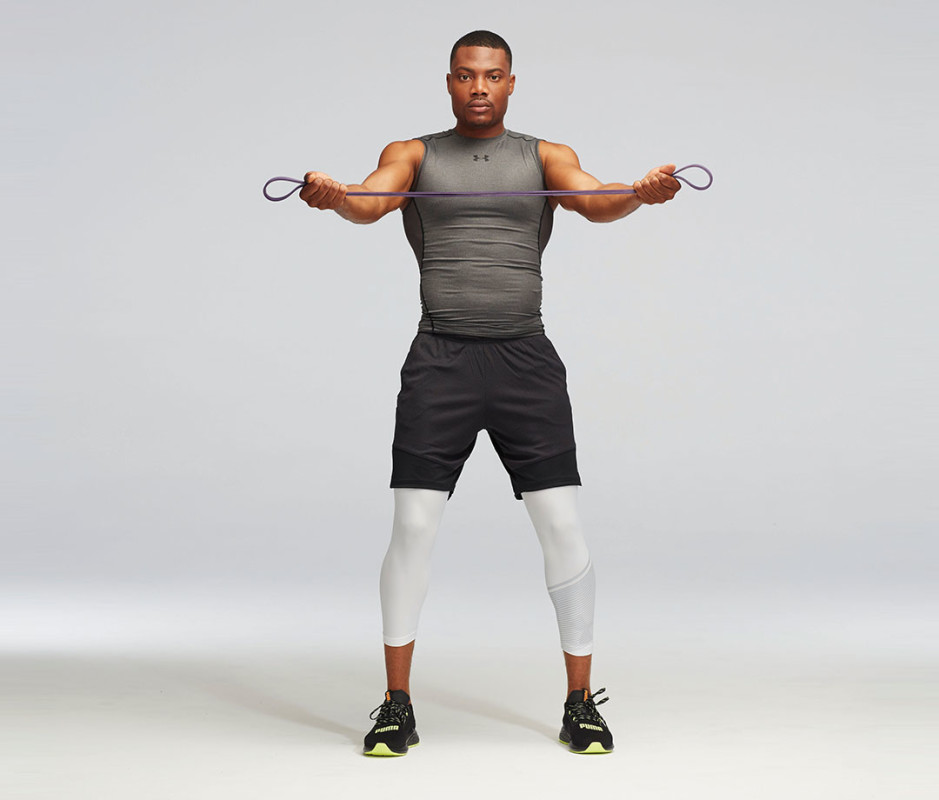
How to Do It
- Stand, arms outstretched and parallel to floor, holding a light to medium resistance band, palms up, to start.
- Engage chest and squeeze together shoulder blades to pulse band outward for one second, then release.
- That’s 1 rep. Do 3 x 12 to 15 reps.
Are Pullups Bad for Joints?
Like any exercise that’s repetitive in motion, pullups can lead to overuse and injury. The key is to properly warm up your shoulder joints, as indicated above; focus on grip strength and getting your foundational strength up to par so you don’t progress too quickly; and try different pullup variations. Play with grip and hand positioning to hit slightly different muscles.
